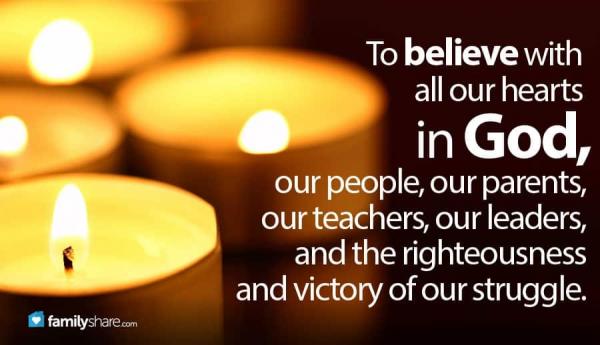
Kwanzaa is a relatively new holiday which celebrates beliefs held dear by the African-American community. It was founded by Maulana Karenga in 1966 and is celebrated not only by African-Americans, but also by African-Canadians and others worldwide, including many non-Africans. The joyful seven-day celebration runs between Dec. 26 and Jan. 1 each year and culminates in a feast and gift-giving. Karenga's goal in creating the holiday was to give black Americans the opportunity to have their own celebration rather than "imitating dominant society."
The word Kwanzaais derived from the Swahili phrase, matunda ya kwanza, which means first fruits of the harvest. It celebrates the seven principles of Kwanzaa, or Nguzo Saba-the seven principles of African Heritage, consisting of what Karenga called "the best of African thought and practice in constant exchange with the world." These seven principles make up Kawaida, which is a Swahili term for tradition and reason.
Each of the seven days of Kwanzaa is dedicated to one of the following:
Umoja (Unity)
To strive for and to maintain unity in the family, community, nation, and race.
Kujichagulia (Self-Determination)
To define ourselves, name ourselves, create for ourselves, and speak up for ourselves.
Ujima (Collective Work and Responsibility)
To build and maintain our community together and make our brothers' and sisters' problems our problems, and to solve them together.
Ujamaa (Cooperative Economics)
To build and maintain our own stores, shops, and other businesses and to profit from them together.
Nia (Purpose)
To make our collective vocation the building and developing of our community in order to restore our people to their traditional greatness.
Kuumba (Creativity)
To do always as much as we can, in the way we can, in order to leave our community more beautiful and beneficial than we inherited it.
Imani (Faith)
To believe with all our hearts in God, our people, our parents, our teachers, our leaders, and the righteousness and victory of our struggle.
Just as Christmas has its Christmas trees, wreaths, stars, angels, and other symbols, the celebration of Kwanzaa has its own:
Mazao (The Crops)
To celebrate the harvest and the rewards of productive and collective labor.
Mkeka (The Mat)
To celebrate tradition and history, which is the foundation we build on.
Kinara (The Candle Holder)
To celebrate our roots, the continental Africans.
Muhindi (The Corn)
To celebrate the children and the future which they embody.
Mishumaa Saba (The Seven Candles)
To celebrate the Seven Principles.
Kikombe cha Umoja (The Unity Cup)
To celebrate the unity that makes all else possible.
Zawadi (The Gifts)
To celebrate the labor and love of our parents and the commitments made and kept by our children.
There are two other supplemental symbols:
Bendera (The Flag)
Black (the people), red (our struggle), and green (our future and hope that comes from our struggle).
Nguzo Saba Poster (Poster of the Seven Principles)
The holiday greeting for Kwanzaa is "Joyous Kwanzaa." A Kwanzaa ceremony may include drumming and other music, libations, a reading of the African Pledge and the Principles of Blackness, reflection on the colors of the flag, a discussion of the African principle of the day or a chapter in African history, a candle-lighting ritual, artistic performance, and, finally, a feast, called a karamu. The greeting for each day of Kwanzaa is "Habari Gani?" which is Swahili for "What's the News?"
Joyous Kwanzaa!

